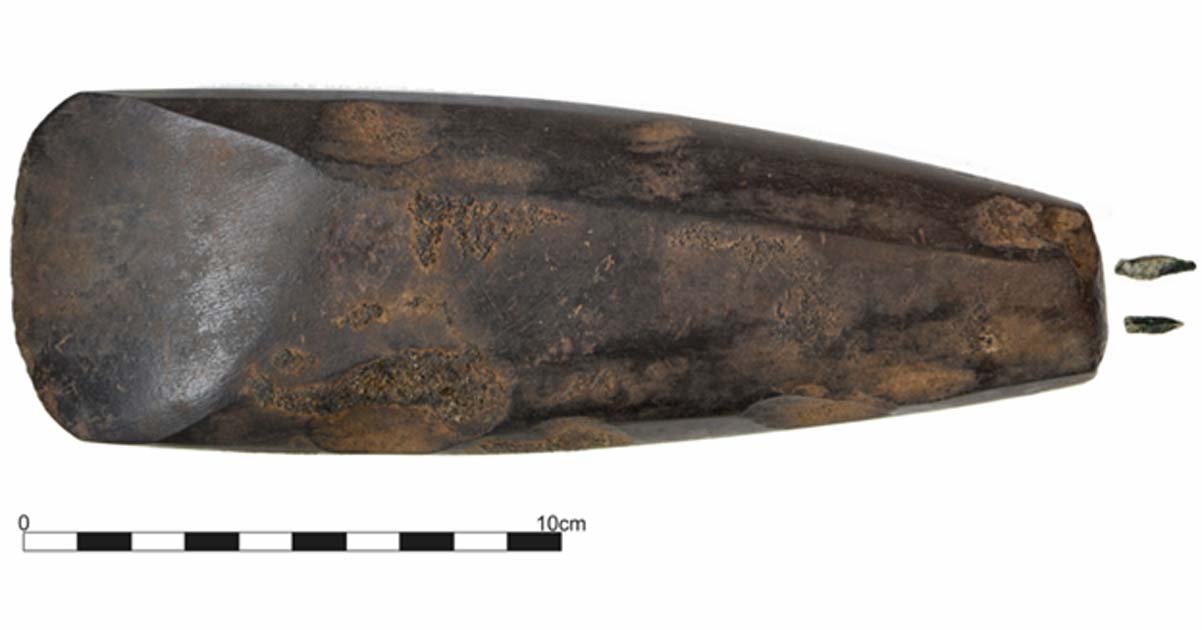Oldest Human Burial and Polished Axe Unearthed in Ireland
Archaeologists have shed new light on the belief systems of early Mesolithic hunter-gatherers after analyzing cremated remains and artifacts given as grave offerings from the earliest recorded human burial site in Ireland. The team says it shows a rare and intimate glimpse of the complex funerary rituals taking place on the banks of the River Shannon at Hermitage, County Limerick, over 9,000 years ago.
The team, led by Dr. Aimée Little from the Department of Archaeology at the University of York, analyzed cremated remains dating from 7530-7320 BC -- the earliest recorded human burial and grave assemblage.
Unusually for such an early burial, the person's body had been cremated and then buried, rather than a simpler form of inhumation.

The Hermitage site, where researchers found Ireland's oldest known burial. Credit: Courtesy of Aimée Little
Polished Adze
The site also featured evidence for a grave-marker; a post which would have marked the spot at which the cremated remains were buried long after the event itself.
A highly-polished stone adze interred with the remains, thought to represent the earliest known completely polished adze or axe in Europe, was revealed to have been commissioned for burial at the site.
- Tinkinswood Burial Chamber: Megalithic Dolmen with Massive Capstone
- Iron Age Burial Ground in Yorkshire Yields 150 Skeletons and Valuable Grave Goods
- Hereditary or Head-Binding? Archaeologist Seeks Answers on the Strange Achavanich Beaker Burial

An artist's interpretation of what the grave at Hermitage would have looked like with a post. Courtesy of Aimée Little
Microscopic analysis of the adze's surface demonstrated a short duration of use, indicating its purpose was for funerary rites.
Funerary Rites
It was then intentionally blunted, probably as part of the funerary rites, which the researchers have suggested may have been a ritual act symbolizing the death of the individual.
The findings mark Hermitage out as an exceptionally important site for the Early Prehistory of North West Europe.
Dr. Little said: "Through technological and microscopic analysis of the polished adze it has been possible to reconstruct the biography of this remarkable grave offering.
"The special treatment of this adze gives us a rare and intimate glimpse of the complex funerary rituals that were taking place graveside on the banks of the River Shannon over 9,000 years ago."
Unprecedented
Dr Ben Elliott added: "The adze is exceptional as we traditionally associate this polished axes and adzes like this with the arrival of agriculture in Europe, around 3000 years later.
- Bizarre Burials Uncovered in Ancient Georgia Cemetery Include Headless Skeletons and Decapitated Skull on a Plate
- The Mysterious Prehistoric Triple Burial of Dolni Vestonice
- A Polish Stonehenge? Discovery of New Burial Mounds May Rewrite History
"Although polished axes and adzes are known from pre-agricultural sites in Ireland and other parts of Europe, to find such a well-made, highly polished and securely dated example is unprecedented for this period of prehistory."
This article, originally titled ‘Archaeologists study earliest recorded human burial site in Ireland’, was published on Science Daily.
Source: University of York. "Archaeologists study earliest recorded human burial site in Ireland." ScienceDaily. ScienceDaily, 8 November 2016. www.sciencedaily.com/releases/2016/11/161108131907.htm



















